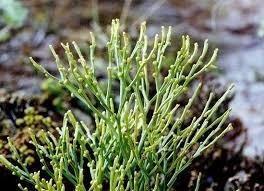. POWER PLANTATION PTERIDOPHYTA
Plants are also known as Pteridophyta.Tanaman fern is a plant with a higher level of moss because it has roots, leaves, and stems. In addition, although the main habitat of spider plants in humid places (higrofit), however, bud plants can also live in various places such as in water (hydrofits), stone surfaces, soil, and can also be attached to epiphytes.
. FEATURES - POWDER FEATURES (PTERIDOPHYTA)
Here are some features of the fern, including:
Organisms are multicellular and eukaryotic These have roots, leaves and stems, so called spicykormophyta.
~Structure of the root
Nails are root-shaped with properties at the end. The root tissue consists of the epidermis, the cortex, and the central cylinder.
~Bar structure
Similar to root tissue, the nail bar structure also consists of epidermis, cortex, and middle cylinder. In the middle cylinder there is a carrier bundle, xylem and phloem. These vessel files play a role in the process of photosynthesis and distribute photosynthesis to all parts of the body.
~ Leaf Structure
Nail leaf structure consists of epidermal tissue, mesofil, and carrier vessel. While the type of nail itself consists of various kinds, including:
When viewed from the size of the leaves, small fern leaves (microfil) and large leaves (macrophils). Non-stem and non-bone microfilm leaves, and hair or scales. While leaf macrophages are stacked, leafy, pale jarngan, coral, and also has a mesophyll with stomata, and its shape.
When viewed from its function, spikes (sporophylls) produce spores (spores and spores) and do not produce spores (tropophiles). Tropophile leaves are referred to as sterile leaves and have chlorophyll so that it plays a role in the process of photosynthesis in producing glucose. While sporofil leaves are called fertile leaves because they produce spores as a means of reproduction.
. Psilophyta (spongy / curved nails)

This class plant has no leaves and roots, but the trunk has a conveyor belt, branched off with the tip of the sporangium. Sporophils contain one type of spore, known as homospore.